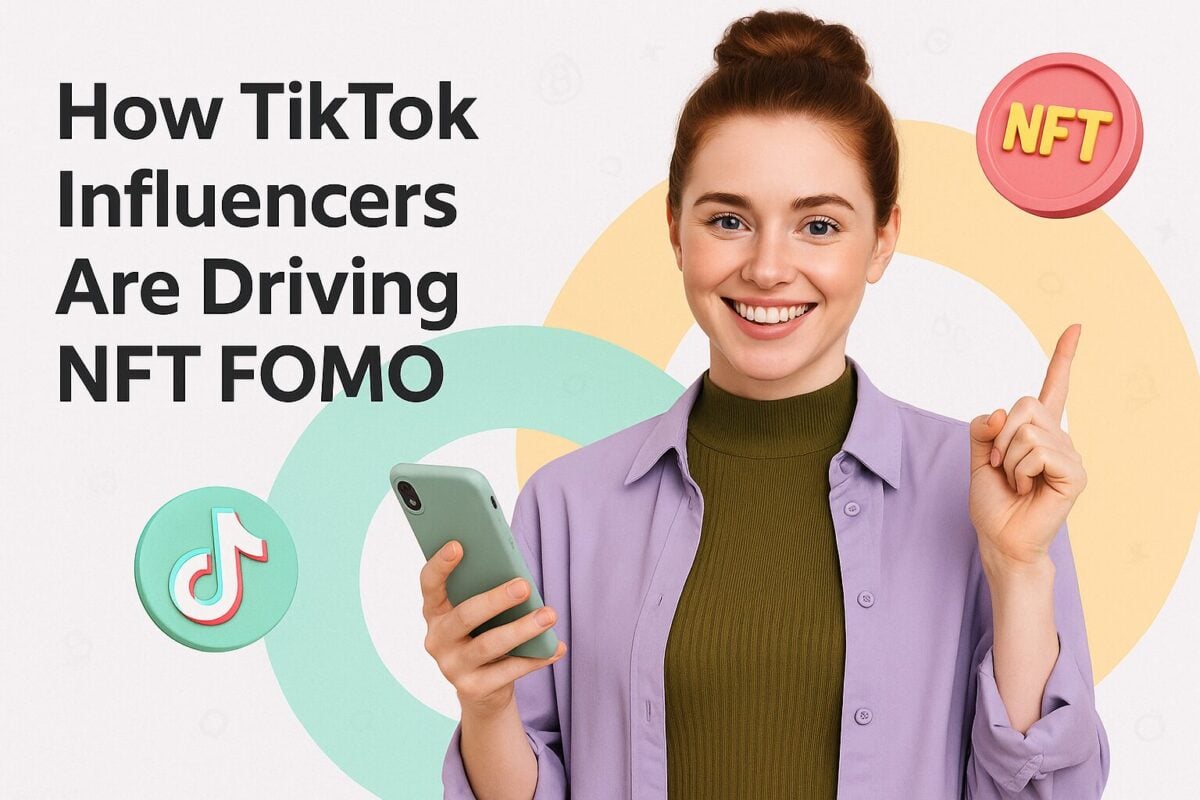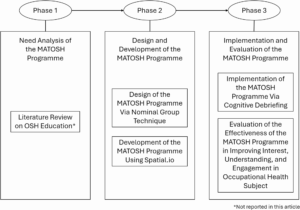How Influencers Fuel NFT FOMO: Risks and Rewards Explored

Navigating the NFT Hype: Strategies for Brands in the TikTok Era
TikTok has emerged as a dynamic hub for NFT excitement, but the soaring floor prices and enthusiastic slogans raise important concerns. Key questions arise:
- Understanding FOMO: Psychological Insights and Platform Dynamics
- Influencer Strategies That Ignite FOMO
- Price-Movement Narratives
- Exclusive Communities
- In-Person and Hybrid Events
- Meme and Hype Drop Calls-to-Action
- The Risks: When FOMO Strategies Backfire
- Creating a Responsible FOMO-Driven Campaign
- Strategic Insights for Marketers
- Pre-Launch: Crafting Engaging and Informative Messaging
- Launch Phase: Sequenced Drops, Tiered Access, and Community Moderation
- Post-Launch: Utility, Support, and Transparency
- Transforming FOMO into Long-Term Loyalty
- How are influencers driving these price surges, and when might the enthusiasm turn into community discontent?
Recent trends indicate a dual approach: short-form creators utilize real-time price notifications and sentiment analysis from third-party sources to accelerate minting speeds, while exclusive Discord and Telegram groups amplify feelings of scarcity.
As marketing professionals develop influencer collaboration strategies, grasping these dynamics—and their potential pitfalls—is crucial. This article explores the mechanisms behind TikTok-induced NFT FOMO, highlights where campaigns may falter, and provides frameworks to transform transient excitement into lasting brand loyalty.
Understanding FOMO: Psychological Insights and Platform Dynamics
Marketers must understand that FOMO is not merely a product of hype; it is a calculated outcome of emotional triggers and algorithmic reinforcement. At its essence, FOMO leverages the scarcity principle: limited-time offerings and restricted NFT supplies create a sense of exclusivity, prompting consumers to assign excessive value to perceived rarity.
Psychological research indicates that scarcity enhances desirability. TikTok influencers capitalize on this by emphasizing countdowns and showcasing spikes in engagement metrics. The platform’s recommendation algorithm further fuels FOMO by promoting content that garners rapid engagement. Videos featuring trending sounds or NFT-related hashtags quickly gain traction, creating an illusion of widespread participation. For marketers, this means that organic reach is not just a reflection of content quality but also of perceived urgency—videos depicting real-time minting or rising price charts can trigger algorithmic boosts.
Understanding the performance trajectory of each video allows marketers to time teaser releases for maximum impact, ensuring that content aligns with audience engagement and platform algorithms. Additionally, FOMO is heightened by referencing external sentiment indicators, such as the Fear & Greed Index. Influencers often cite this index as a gauge of market sentiment, framing it as both a buying signal and a prompt for swift action.
For brands, incorporating live updates of such indices into campaign dashboards can facilitate quick decisions regarding content pacing and advertising strategies. Monitoring real-time search trends across TikTok, Google Trends, and blockchain analytics can help determine whether the community is in a phase of fear-driven accumulation or at risk of a sell-off.
FOMO thrives in environments characterized by ambiguity. TikTok’s brief video format limits detailed explanations, prompting influencers to use cognitive shortcuts—phrases like “ape in” or “to the moon”—that resonate emotionally. Marketers should counterbalance these shortcuts with clear risk disclosures in captions or on-screen text. By combining urgency cues (e.g., “Mint window closes in 2 hours”) with reminders of price volatility, brands can leverage FOMO without compromising long-term credibility.
To implement these insights, create a “FOMO Metrics” section in every influencer brief, outlining target triggers (e.g., Fear & Greed Index thresholds, engagement benchmarks, mint countdowns) and linking them to content deliverables and paid media strategies. Utilize tools like CreatorIQ or Tagger to automate sentiment tracking and connect real-time FOMO indicators back to your campaign dashboard. This alignment ensures that both creative assets and activation schedules are responsive to market sentiment, maximizing reach and conversions while maintaining brand integrity during peak hype.
Influencer Strategies That Ignite FOMO
Leading TikTok creators employ a tactical playbook to generate FOMO, utilizing real-time price alerts, exclusive community invitations, and in-person events.
Price-Movement Narratives
Influencers often highlight intraday NFT floor price fluctuations, sometimes overlaying live charts to create social proof at scale. These videos frequently include direct calls to action, urging viewers to “link in bio to mint before it rises another 20%,” converting engagement into immediate action. Marketing teams should analyze which content strategies (e.g., technical analysis versus countdowns) yield the highest conversion rates and replicate successful templates across both paid partnerships and owned channels.
Exclusive Communities
Data suggests that Discord and Telegram are preferred platforms for peer validation. By branding these servers as “free feedback loops” for intense discussions, influencers reinforce the idea that missing out equates to lost opportunities. Agencies can work with influencers to create co-branded welcome sequences in these chats, sending automated messages that provide exclusive previews or early access codes. This creates a multi-layered funnel: TikTok video → gated chat → high-intent mint page.
In-Person and Hybrid Events
The Board Ape Yacht Club example illustrates how simple real-world activations can mitigate reputational risks. Brands should complement digital drops with localized, accessible experiences—such as pop-up art exhibits, café meet-ups, or co-branded lounges—where holders can engage tangibly. Even small-scale events, like photo-op NFT art walls or limited-edition merchandise giveaways, can transform passive holders into enthusiastic advocates, amplifying FOMO within their networks.
Meme and Hype Drop Calls-to-Action
Influencers often shift to “troll tokens” or one-day meme drops, creating a sense of urgency. Brands should avoid purely speculative approaches but can harness this momentum by launching limited-run utility tokens paired with discounts or loyalty rewards that align with brand values. By structuring these drops around defined utility (e.g., VIP webinar access, future airdrops) rather than speculation, marketers can capture meme-driven energy without falling into pump-and-dump traps.
To integrate these tactics into a repeatable campaign framework, update influencer brief templates to include sections for “Community Activation,” “In-Person Engagement,” and “Meme-Drop Utility.” Clearly define KPIs—such as conversion rates from Discord to mint, event attendance versus RSVPs, and token utility redemption metrics—and assign tracking responsibilities to team members.
Utilize project management tools like Asana or Trello with these sections pre-filled, ensuring that each influencer collaboration adheres to consistent operational standards. This structured approach not only boosts short-term minting velocity but also fosters lasting community trust, driving both immediate FOMO and sustained brand loyalty.
The Risks: When FOMO Strategies Backfire
FOMO campaigns lacking safeguards can lead to rapid community backlash and reputational damage:
- Pump-and-Dump Consequences: Meme coin drops may generate explosive short-term interest but leave holders feeling exploited when prices plummet, damaging long-term trust.
- Expectation vs. Reality Gap: When influencers promote exclusive perks—like virtual yacht events—only to deliver nothing, communities express their dissatisfaction across platforms, amplifying negative sentiment.
- Regulatory Scrutiny: Unqualified hype without disclaimers can attract compliance issues; several influencers have skirted SEC guidelines by failing to disclose their financial advice credentials, risking takedown notices.
To prevent and manage FOMO-related backlash, establish a “Backlash Response Protocol” within your influencer campaign operations:
- Disclosure & Disclaimer Requirement: Mandate a compliance slide in every brief, requiring creators to include a 3-second risk disclosure before hype segments.
- Real-Time Social Listening: Utilize tools like Brandwatch or Sprout Social to monitor negative sentiment spikes across Discord, TikTok comments, and Twitter replies, directing alerts to a designated Slack channel for prompt brand review.
- Rapid Reengagement Playbook: Develop a response strategy that includes an Acknowledgment Post (24-hour turnaround), Corrective FAQ Video (48-hour), and Live AMA Session (72-hour), complete with templated scripts and approved spokesperson contacts.
- Backlash KPIs: Incorporate metrics like Net Sentiment Change and Crisis Response Time into your campaign scorecard, reviewing them alongside standard FOMO performance indicators in weekly influencer performance meetings.
This proactive framework not only mitigates potential fallout but also positions transparent responses as trust-building opportunities, transforming backlash into community advocacy.
Creating a Responsible FOMO-Driven Campaign
Brands must evolve beyond mere hype to create FOMO-driven campaigns grounded in clear guidelines and educational value:
- Risk-Disclosure Modules: Embed these in every influencer brief, requiring creators to communicate potential volatility in brief caption callouts. This approach protects communities and preempts backlash by encouraging prudent behaviors like staggered entry and profit-taking.
- Profit-Taking Checklist: Integrate this checklist into campaign deliverables, asking influencers to display a 3-step text overlay illustrating these steps during peak mint moments.
- Transparent Event Structures: Rather than vague promises of “VIP yacht club” access, define clear tiers—e.g., Tier 1 holders unlock a 50-person studio session; Tier 2 holders receive branded digital badges for future drops. Include these parameters in briefs using templated tables linking NFT wallet IDs to activation tiers.
- Real-Time Sentiment Monitoring: Use tools like Brandwatch or Sprout Social to track spikes in negative versus positive mentions across TikTok comments, Discord threads, and Twitter replies. Route alerts into a dedicated “Campaign Control Room” Slack channel staffed by community managers who can deploy pre-approved mitigation assets—such as a brief “Behind the Scenes” video, an FAQ graphic, or a live “Market Context” stream—to reframe narratives before they escalate.
- Responsible FOMO Framework: Establish five pillars—Transparency, Education, Tiered Utility, Community Safeguards, and Rapid Response.
In practical terms, update your influencer brief template with a “Responsible FOMO Checklist” sidebar featuring five action items:
- Mandatory Risk Disclosure Slide (2–3 seconds)
- Profit-Taking Overlay Deliverable (text graphic)
- Tiered Event Schedule (table format)
- Sentiment Alert Setup (Brandwatch integration guide)
- Crisis Response Protocol (Slack channel link and asset library).
Utilize project management platforms like Notion or Airtable to automate these checklist items, ensuring that every influencer collaboration—from micro-creators to high-profile partners—is impactful and maintains integrity, safeguarding brand equity while maximizing FOMO-driven engagement.
Strategic Insights for Marketers
Pre-Launch: Crafting Engaging and Informative Messaging
Initiate with a three-phase creative brief:
- Narrative Hook: Specify emotional triggers—scarcity (“Only 500 mint slots”) and urgency (“24-hour window”)—and require influencers to script a 5-second teaser emphasizing these elements.
- Value Justification: Define educational micro-moments, asking creators to reference live sentiment indices or historical floor-price trends to enhance credibility.
- Risk Boundary: Include a glossary of key terms (e.g., “floor price,” “whitelist,” “greed index”) and a link to a hosted explainer video, ensuring audiences gain context alongside excitement.
Launch Phase: Sequenced Drops, Tiered Access, and Community Moderation
Implement a Launch Sequence Grid mapping 6-8 influencer posts from T-minus 48 hours to T-plus 72 hours. Tier access based on wallet loyalty: early-access holders receive an exclusive mint code 12 hours before the public drop, while secondary holders gain social-only perks.
Incorporate a Community Moderation Roster into briefs, assigning each influencer two vetted Discord moderators who follow a standardized engagement script—answering FAQs, cross-posting highlights to a central “Hype Tracker” channel, and escalating any concerning sentiment to brand teams.
Post-Launch: Utility, Support, and Transparency
After the mint window, guide influencers to host “Utility Unlocked” livestreams, showcasing secondary-market features, governance proposals, or roadmap milestones. Each post-launch brief should include instructions for a Holder Satisfaction Survey built in Typeform, with live results feeding into a shared analytics dashboard.
Schedule a “Month-End Performance Sync” where influencer partners review four KPIs—secondary-market volume, sentiment change, event attendance, and Discord retention—aligning objectives for the next cycle.
To operationalize these steps, create a three-tab Airtable base linked directly in every influencer brief:
- Tab 1: “Pre-Launch Assets” (teaser scripts, sentiment data links)
- Tab 2: “Launch Calendar” (sequenced post schedule with automatic reminders)
- Tab 3: “Post-Launch Insights” (embedded Typeform survey results and performance charts).
Grant view-only access to creator partners for transparency, while assigning brand and agency teams edit permissions. This centralized documentation ensures that strategic phases—Pre-Launch Teasers, Launch Execution, and Post-Launch Optimization—are visible, measurable, and easily iterated upon for future NFT campaigns.
Transforming FOMO into Long-Term Loyalty
By integrating urgency with clear guidelines and strategic follow-through, brands can leverage TikTok-driven FOMO to achieve both rapid minting success and enduring community loyalty. A comprehensive influencer brief—featuring FOMO metrics, responsible disclosure checklists, and post-launch feedback mechanisms—ensures that every creator collaboration balances excitement with education.
Real-time sentiment tracking and rapid response strategies help prevent hype from devolving into backlash, while tiered utility events and holder surveys convert one-time buyers into passionate advocates. Ultimately, FOMO campaigns that prioritize transparency, risk management, and structured debriefs not only maximize short-term conversions but also cultivate sustainable ecosystems around NFT launches.
For both agency strategists and in-house marketers, this integrated approach serves as a blueprint for transforming fleeting excitement into lasting brand equity, turning every moment of fear of missing out into an opportunity for deeper customer engagement.







